Vegan Globetrotter is supported by our audience. When you purchase through one of our links, we may earn a small affiliate commission. As an Amazon Associate I earn from qualifying purchases. Your cost is not affected.
==================
A knife and cutting board is a vital tool in the kitchen. It’s useful for both professional chefs and regular people cooking at home. A sharp knife makes cutting vegetables, fruits, bread, and others easy. Good knives make cooking easier. You can cut food with a high-quality chef’s knife without much force.
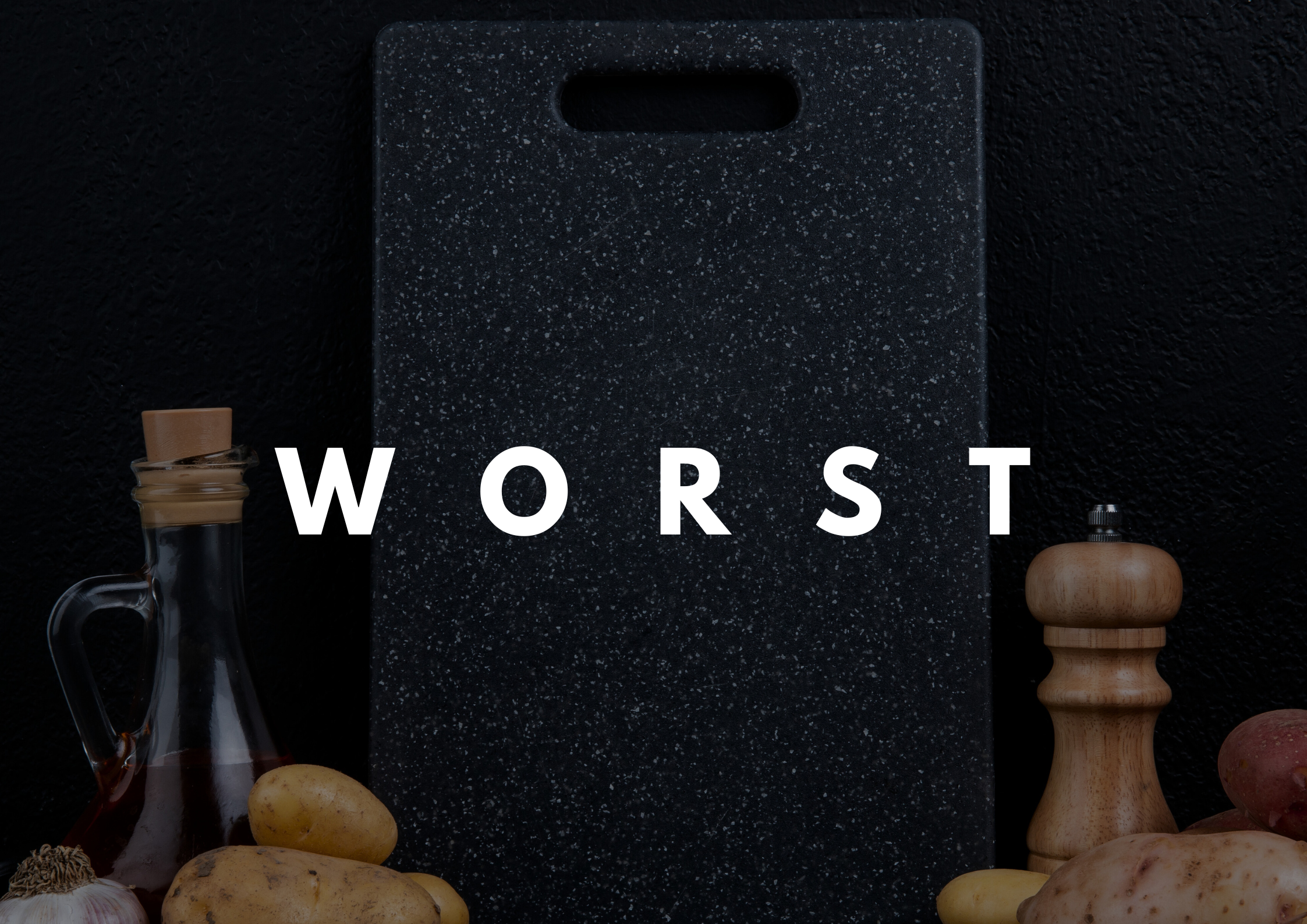
But, using sharp knives on a hard surface can become dull in just a month. Guess what? Your cutting board is the culprit. It can make your blades dull quickly.
But don’t worry! To help you avoid this problem, we’ve talked about different types of cutting boards that can damage knives.
Worst Materials for Cutting Board
When picking a chopping board, you may care about how it looks in your kitchen. But before you choose one for slicing and dicing, there are some essential things to consider. Sharp knife blades hit the board a lot when we’re cooking. These blades are thin and robust, but hitting a hard surface like a stone over and over can make them lose their sharpness quickly.
As time passes, the knife’s edges can bend and become uneven. It’s tough to spot these problems just by looking at the blade. So, using a good board ensures your sharp knives stay safe and do not get ruined. Let’s figure out which cutting boards are bad for your knives.
Glass Cutting Boards
Many people like glass boards. They look shiny and impressive. Yet, they could be better for chopping and slicing.
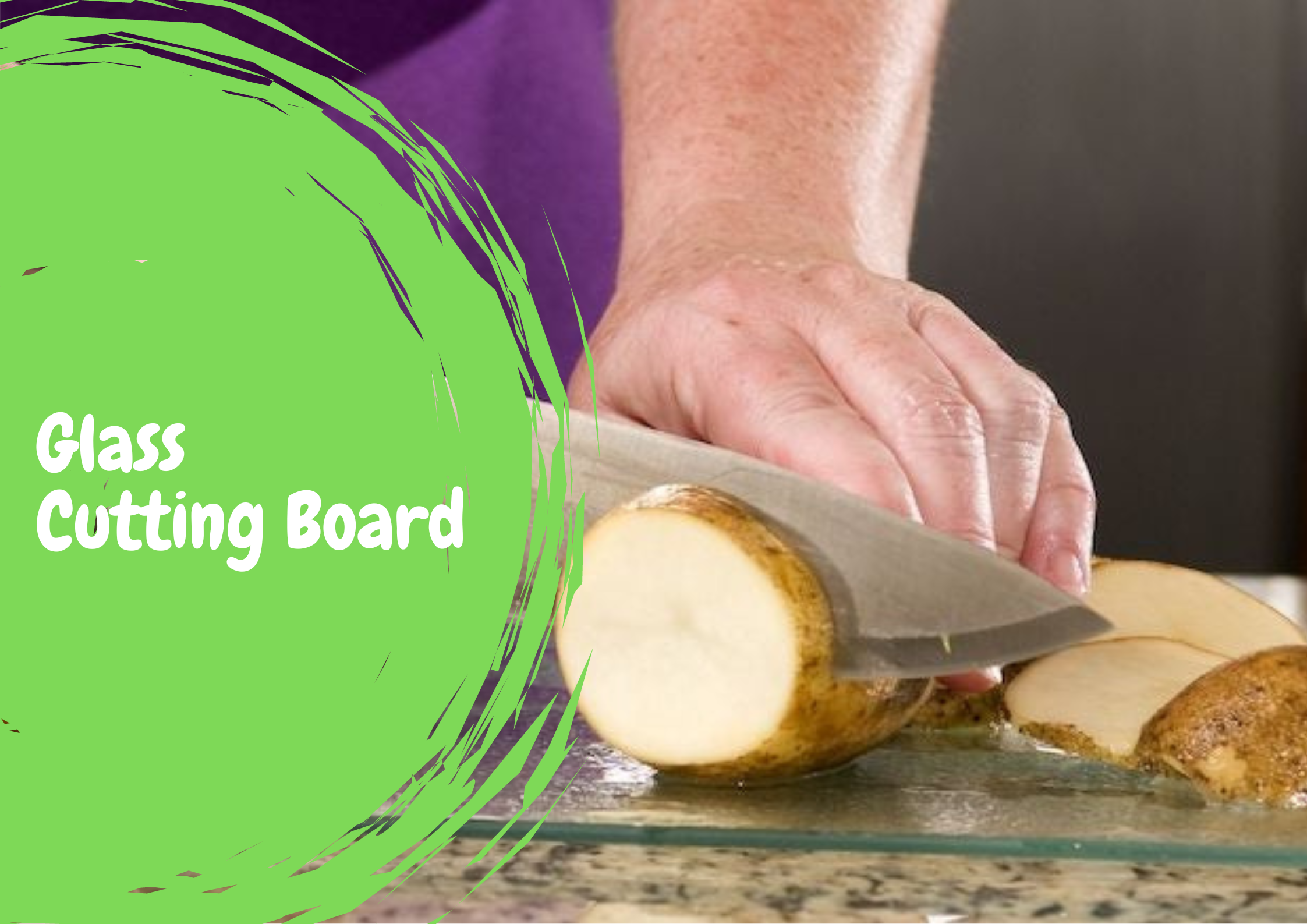
Glass boards are rigid and won’t get scratched easily, but they’re too hard for knives. If you use them a lot, your knife blades can become dull. Also, the blade’s edges can bend faster if you keep applying force.
If you already have a glass cutting board, it’s better to use it for things like rolling pastry dough, kneading dough, and cutting soft foods like fruits and sandwiches.
But, it’s not a good idea to cut vegetables and meat alternative with a sharp knife on a glass board. Glass is slippery, so things can easily slide around. This could be dangerous and cause accidents.
Hygiene and Cleanliness
Glass cutting boards provide a hygienic surface that is easy to maintain. Their non-porous nature prevents the absorption of bacteria and food particles, making cleaning a breeze and contributing to a healthier cooking environment.
Aesthetic Variety
With a wide array of captivating designs and patterns, glass cutting boards offer an opportunity to enhance the visual appeal of your kitchen. You can choose a design that’s good for your style and adds a touch of elegance to your cooking space.
Affordability
Glass cutting boards are often budget-friendly, giving you a practical and stylish kitchen tool without breaking the bank.
Low Maintenance
Requiring minimal upkeep, glass cutting boards don’t demand unique treatments or frequent maintenance rituals. This convenience is beneficial for busy households.
Slippery Surface Hazard
The smooth surface of glass cutting boards can pose a safety concern in the kitchen. Its slipperiness may lead to accidental slipping and knife-related mishaps, requiring extra caution during food preparation.
Fragile
When subjected to force or impact, glass cutting boards are vulnerable to breaking. This fragility necessitates careful handling and mindful usage to prevent unintended breakage.
Too Much Noise
Knives on glass cutting boards can generate a notable amount of noise, which might be bothersome, especially in quiet or shared living spaces.
Storage Sensitivity
Proper storage is crucial to prevent damage or breakage of glass cutting boards. Storing them securely to cut the risk of accidental impact is necessary for their longevity.
Accelerated Knife Dulling
The hardness of glass can speed up the dulling of knife blades, requiring more frequent sharpening or maintenance to keep optimal cutting performance.
Marble Cutting Boards
Marble boards come in all sorts of colors, shapes, and sizes. You’ve got plenty of choices to pick from for different cooking tasks.
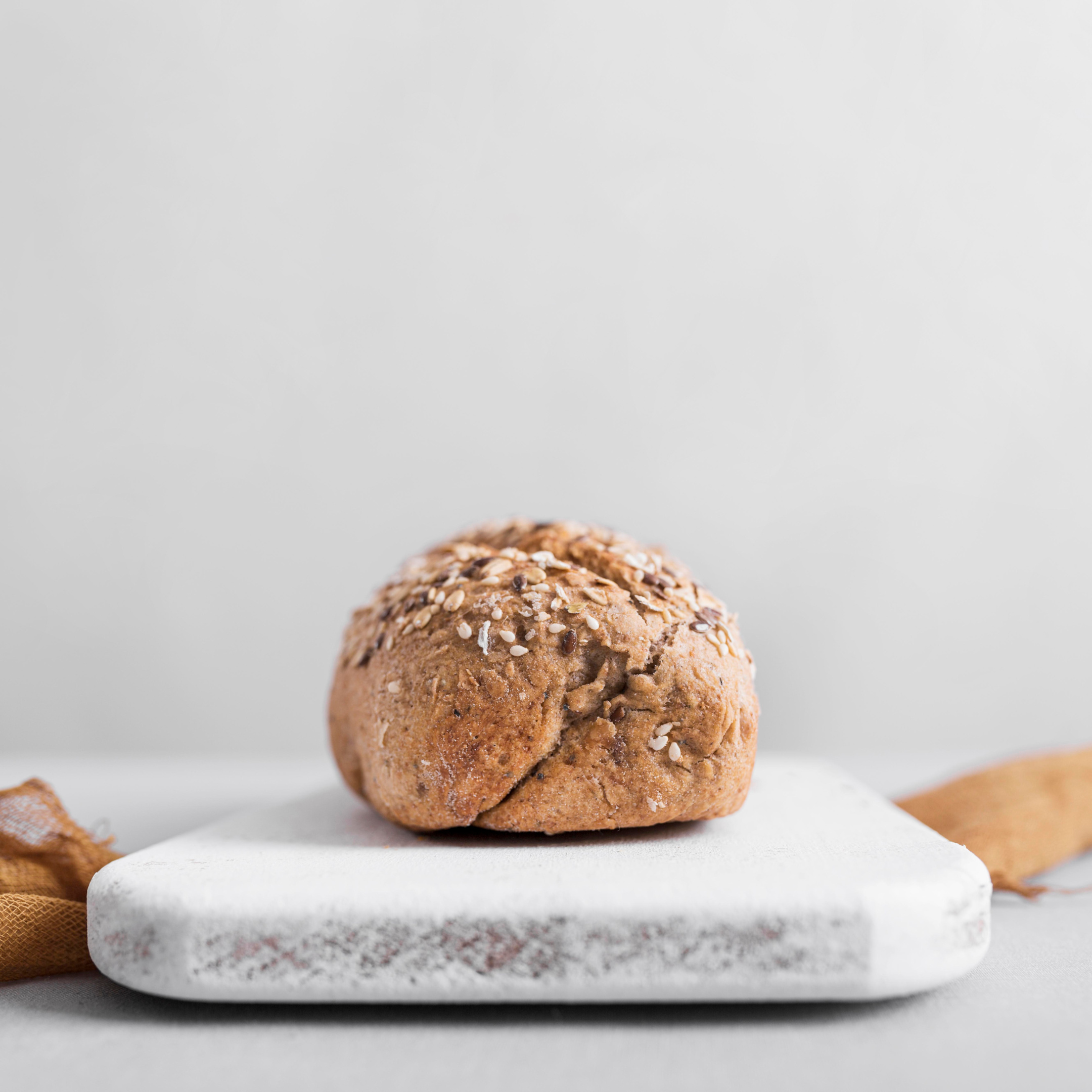
But here’s the thing, there are better choices than marble for cutting boards, just like glass. It’s a hard stone with a smooth surface. So, when chopping veggies, fruits, or meat substitutes on a marble board, get ready for some noise.
Honestly, marble is more at home as a countertop than a cutting board. But I’ve found it handy for kneading dough and making burgers because it’s so smooth, and things don’t stick. Plus, you can plop hot pans on these boards without any fuss.
Safe Food Prep
One of the biggest pluses of using a marble board is its ability to ensure safe food preparation. The natural properties of marble, such as its non-porous surface, make it an excellent choice for keeping your ingredients clean and minimizing the risk of bacterial contamination.
Cross-Contamination Prevention
With a marble cutting board, you can worry less about cross-contamination. Its smooth and impervious surface helps prevent the absorption of juices, oils, and other residues from different foods, allowing you to switch between ingredients confidently.
Effortless Cleaning
Cleaning up after cooking becomes a breeze with a marble cutting board. Its smooth surface wipes clean easily, saving you time and effort in the kitchen.
Durability and Longevity
Marble cutting boards are known for their longevity. They can stand the test of time with proper care, remaining a reliable companion in your culinary endeavors for years to come.
Audible Clacking
While using a marble board, you may notice a clicking noise when you cut on it. This noise factor might be a bit bothersome in a quiet kitchen.
Weighty Consideration
Marble cutting boards tend to be quite heavy, which can be a drawback if you prefer a more lightweight option or need to move your cutting board around frequently.
Knife Dulling
Unfortunately, using knives on marble can lead to faster blade dulling. The hardness of marble can wear down knife edges more quickly, requiring more frequent sharpening.
Acidic Food Sensitivity
Marble can degrade over time when in contact with acidic foods. If you often work with acidic ingredients like citrus fruits or vinegar, this material may not be the best choice for your cutting board, as it could show signs of wear over time.
Bamboo Cutting Boards
Like the other options we discussed, bamboo can also make your knife edges less sharp. It’s even more demanding than maple boards, which are known to be great for knives because of their high silica content.
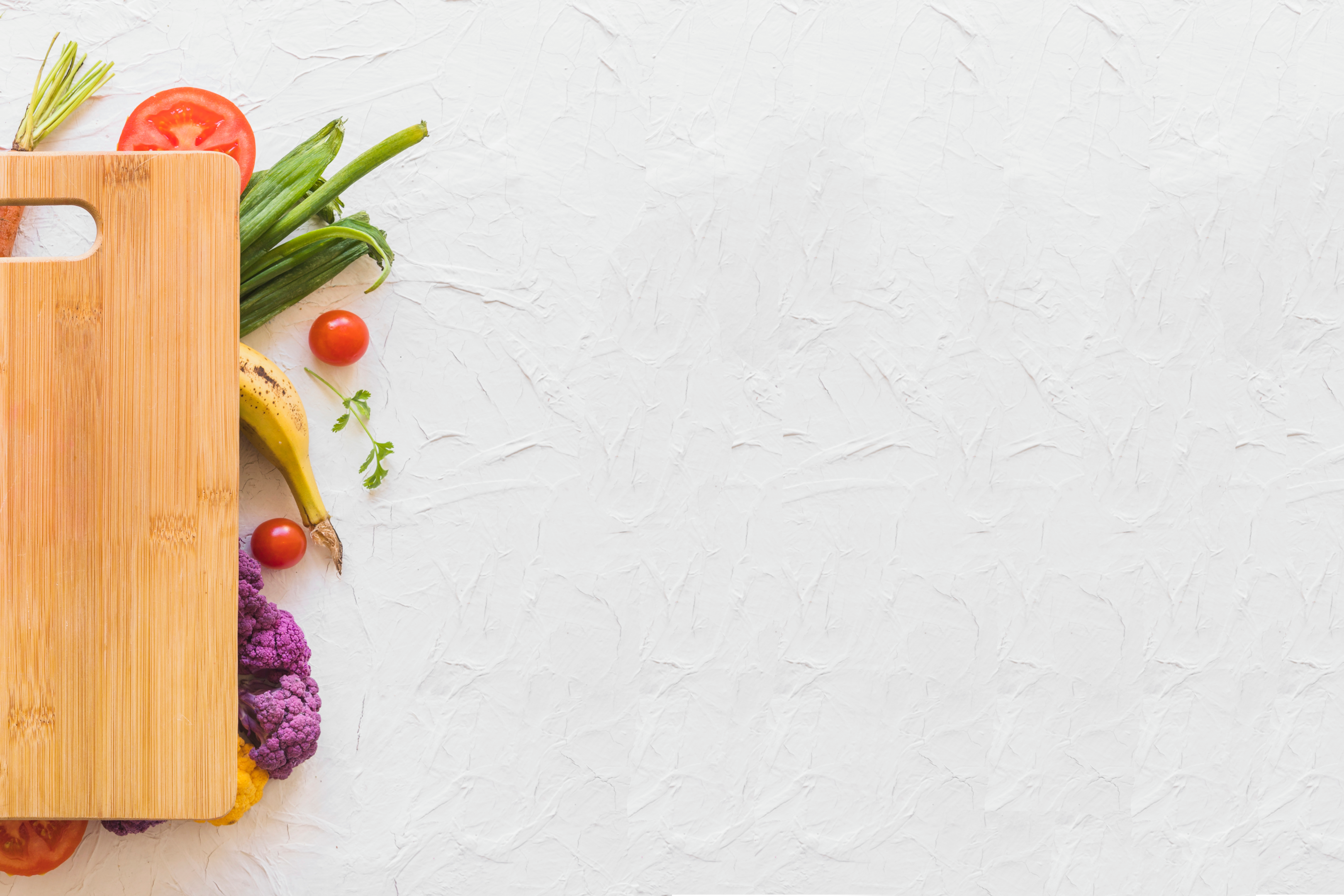
People who want eco-friendly kitchen stuff often choose bamboo. But keep in mind it’s better for lighter tasks. If you’re kneading dough, you might need to use some oil on it.
Budget-Friendly
One of the great things about this option is that it won’t break the bank. It’s a wallet-friendly choice that will satisfy your budget.
Eco-Friendly
This choice is all-natural, meaning it’s made from environmental materials. If you’re into environmentally friendly stuff, this is a plus.
Not Knife Friendly
Unfortunately, using this material for cutting might not be the best news for your knives. It can be tough on them and lead to duller edges over time.
Food Safety Concerns
There’s a bit more risk when it comes to keeping things clean. Because of its properties, there’s a higher chance that bits of food can get trapped and stay behind, which isn’t great for avoiding contamination.
Granite Cutting Boards
Granite is like the superstar of kitchen countertops these days. It has that excellent shine, and fancy design that upgrades the look of your kitchen when you’re giving it a makeover.
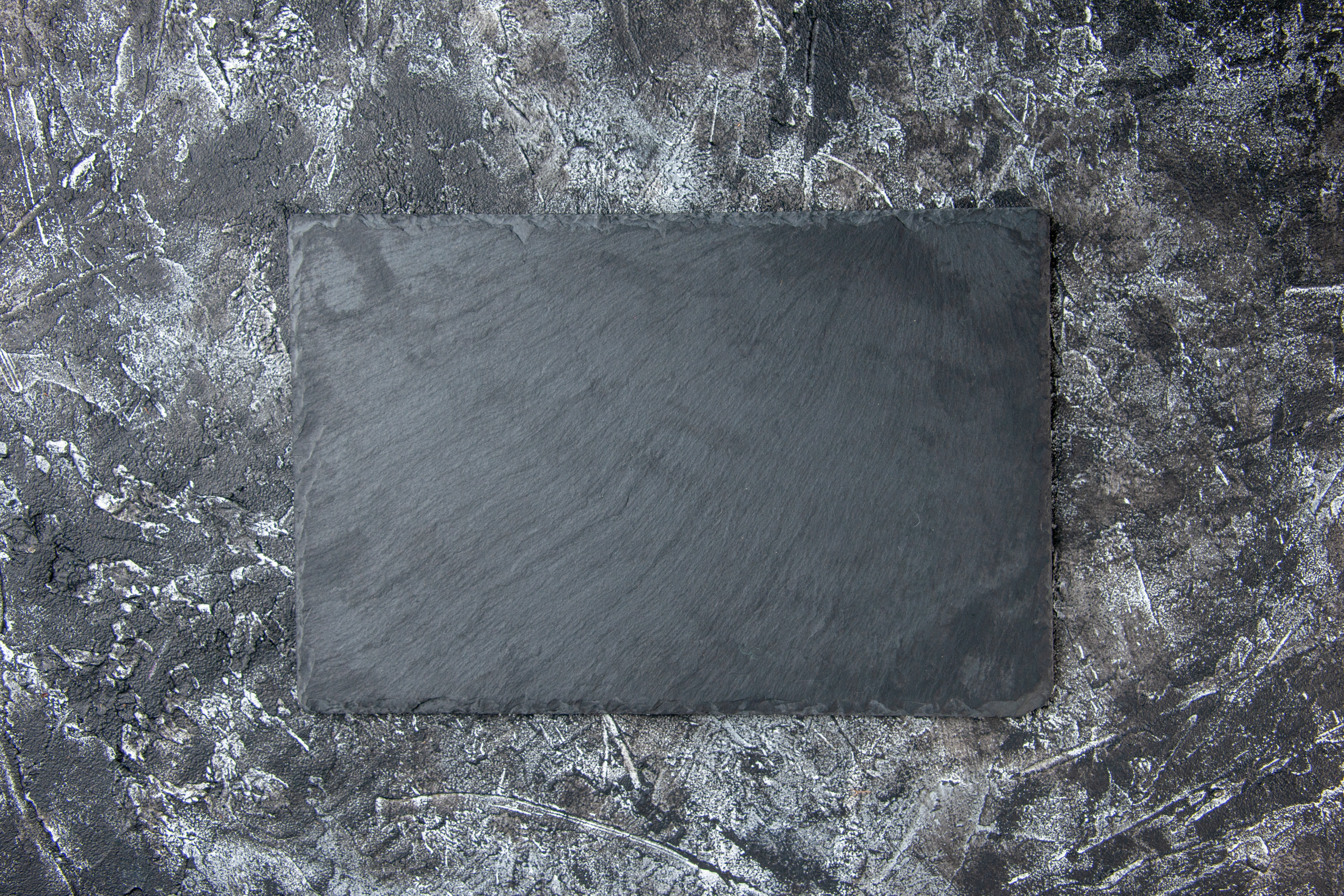
But here’s the thing: just like marble and glass cutting boards, granite can be tough on your knives. They might lose their sharpness faster. And you know what else? If you’re into acidic stuff like lemons or tomatoes, granite can lose its sparkle over time because of that acid action.
Attractive Appearance
One of the standout perks of using granite is that it adds a touch of elegance and charm to your space. It’s captivating appearance and unique patterns can truly elevate the look of your kitchen or any area where it’s used.
Heat Endurance
Granite can handle the heat! You don’t need to worry about placing hot pots and pans directly on its surface. It’s like having a built-in heat-resistant shield.
Smooth
The smooth granite surface looks great and makes your cooking and cleaning experience a breeze. Spills and messes are easy to wipe away.
Hygienic
Granite is naturally resistant to bacteria and germs, making it a hygienic choice for food prep and cooking activities.
Can Dull Knife
Unfortunately, granite can be tough on your knives. Using them on granite might make them lose their sharpness more quickly.
Color Changes
Watch out for acidic stuff like lemons and vinegar. Over time, these acidic foods can cause the color of your granite to fade or change. So, be careful if you’re a fan of tangy ingredients.
Composite Cutting Boards
Epicurean boards have become quite trendy these days. They’re like the rock stars of composite boards.
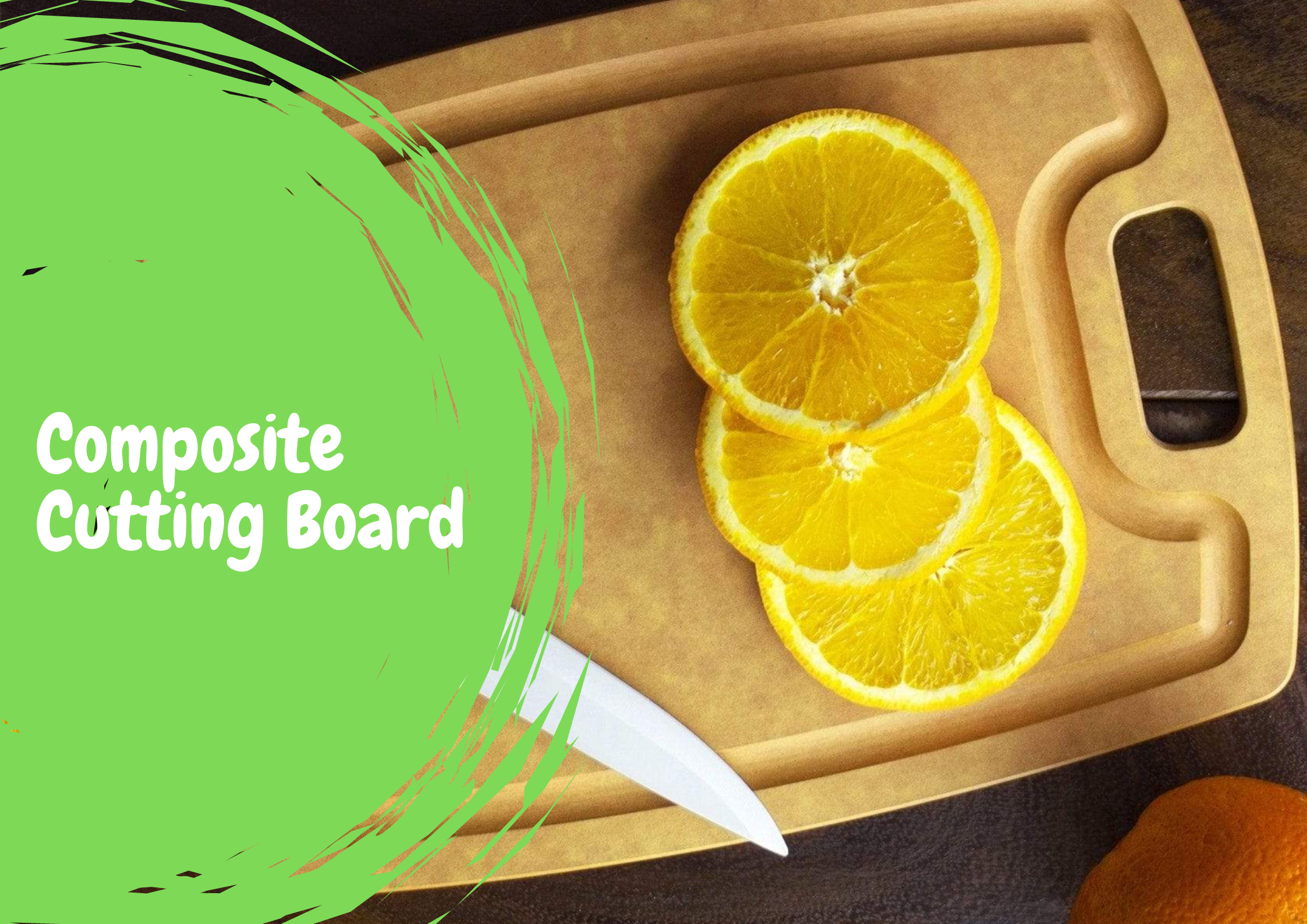
These boards are made from wood, fibers, and phenolic resins. They look lovely, are built to be strong, and can take a beating. While they’re good for many things, there might be better choices for cutting. They’re in-between – not too soft or hard – and could make your knives lose their sharpness over time.
Aesthetic Appeal
One of the great things about these boards is that they look perfect. They can add a aesthetic touch to your kitchen setup and make your cooking space more inviting.
Durability
These boards are built to last. You can count on them to stick around and serve you well for a long time, making them a good investment for your kitchen.
Variety in Options
You’ve got lots of choices when it comes to sizes and designs. Whether you need a big one, a small one, or something in between, you’ll likely find a cutting board that suits your needs perfectly.
Pocket-Friendly
These boards won’t drain your wallet. They come reasonably priced, so you can get a good-quality board without spending too much.
Knife Impact
Unfortunately, these cutting boards might not be the best for your knives. Over time, they could make your knife edges less sharp, so you might need to sharpen them more often.
Noisy Chopping
Get ready for some noise! Cutting on these boards can be loud, so you should be prepared if you prefer a quieter kitchen environment.
Wooden Cutting Boards are the Best for Your Knife
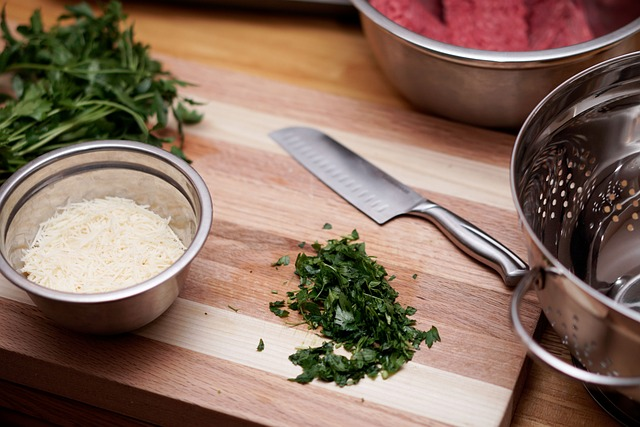
Wood is fantastic for cutting boards because it’s not only beautiful and strong, but it also helps keep your knives sharp. When you cut on a wooden board, the wood bends slightly to your knife’s edge. This bending prevents your blade from getting blunt and keeps it sharp for longer.
How Wooden Cutting Board Constructed
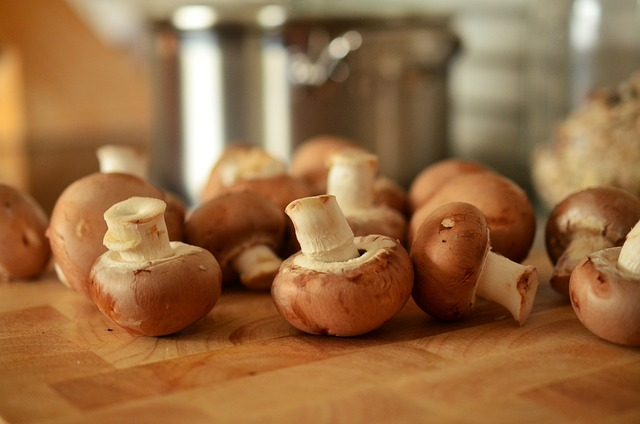
While you can still get cutting boards made from a single piece of wood, most new ones are assembled by gluing several pieces. This makes them more rigid and less likely to break or change shape. There are three ways they’re put together: end grain, edge grain, and flat grain. The most usual one is edge grain. Imagine a pretend 2 x 4 piece of wood to understand their differences.
End Grain
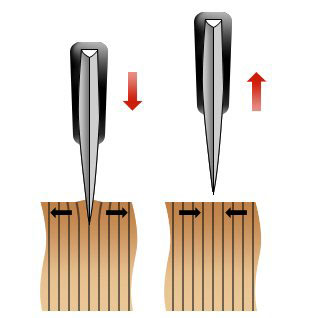
When making an end-grain board, you’d take the chopped end of a piece of wood, like the cut part of a tree trunk. This creates a checkerboard pattern on the top of the board. You know those traditional butcher’s blocks? They’re made with this end-grain style.
Flat Grain

If you imagine the wide side of a pretend 2 x 4 wood piece facing up, that’s a flat-grain board. It might look like an edge-grain board, but it could be stronger and more durable due to the grain pattern. Some edge-grain boards mix in face-grain pieces, and that’s okay. It’s rare to find a pure flat-grain board nowadays. The key is to have more edge grain for strength and to resist bending.
Edge Grain
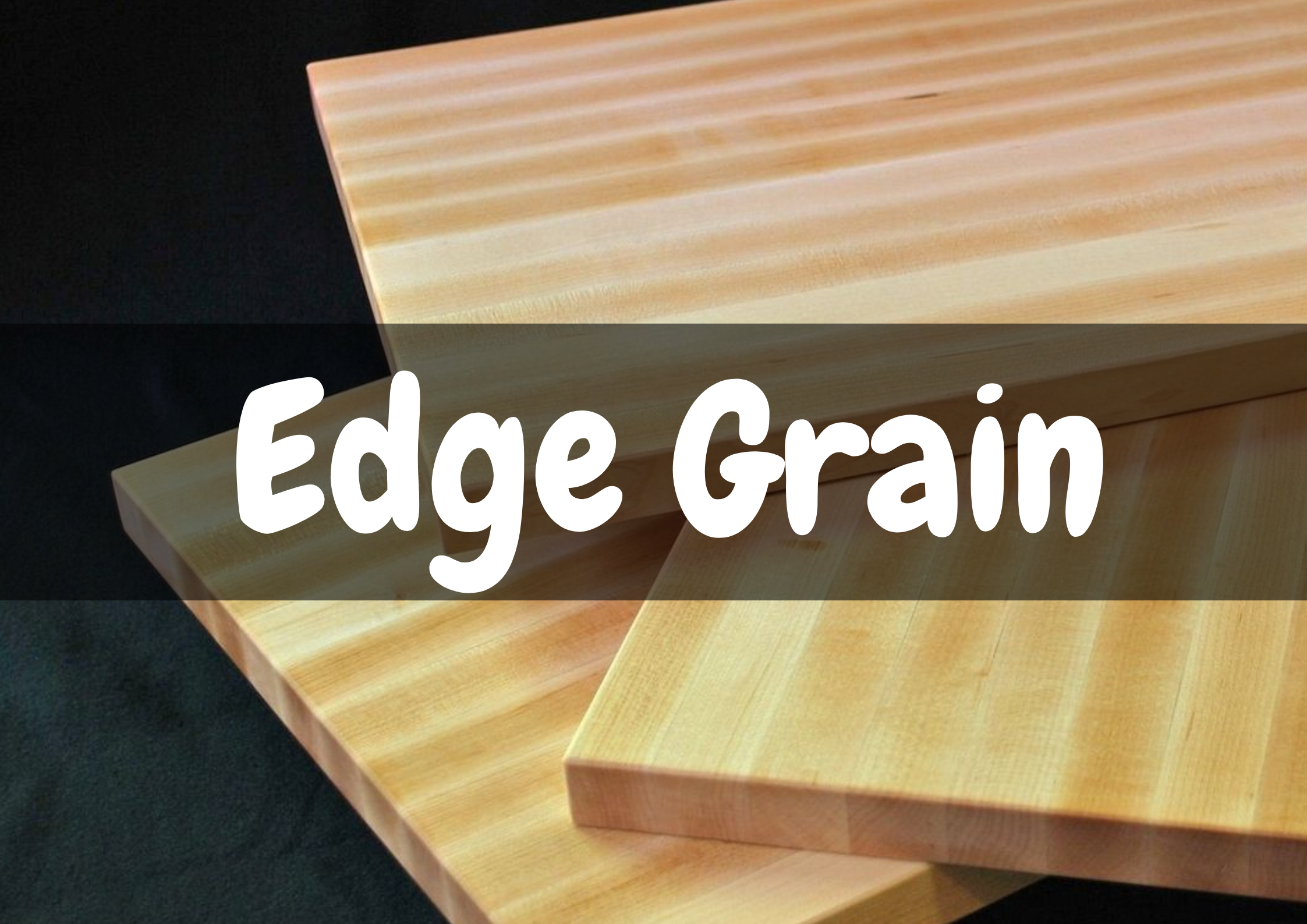
Imagine your pretend 2 x 4 wood piece lying flat but with the long, narrow side facing up (the 2-inch side). That’s what we call an edge-grain board. Ideally, each piece of wood in the board would have its grain going up and down, but sometimes they’re mixed.
Is Plastic Cutting Board Safe for Your Knife?
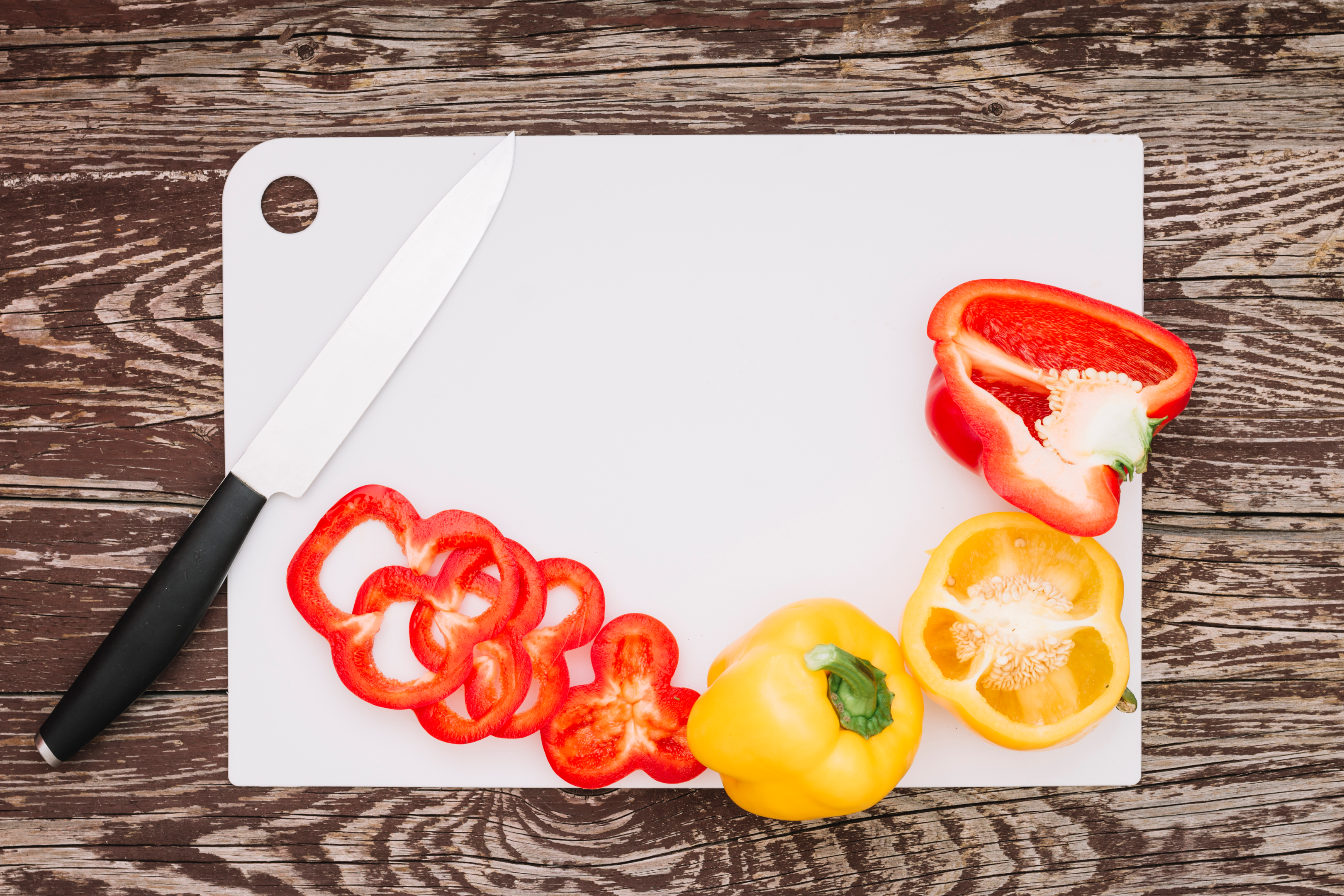
Plastic cutting boards are made from high-density polypropylene and are not as hard as glass or stone. This makes them gentle on your knives so they don’t get dull too fast. But they’re still tough enough to stay sturdy and be used often. Some people think they might be too soft, but they’re popular, especially in busy kitchens.
Choose the Right Cutting Board, not the Worst
In conclusion, when choosing the right cutting board for your knives, it’s essential to be mindful of the material you’re using. As with any kitchen tool, finding the balance between usability and preserving the sharpness of your knives is essential. Understanding the strengths and weaknesses of different cutting board materials can help you make an informed decision that best applies to your culinary needs and ensures the longevity of your cutting board and your knives.
FAQs
Why is glass a lousy choice for a cutting board?
Glass cutting boards are problematic and can quickly dull knife edges. They also create a slippery surface, making it more likely for accidents to happen while cutting.
What's the problem with marble cutting boards?
Marble cutting boards are also quite complex,, leading to faster knife dulling. Additionally, acidic foods can easily damage them and might not be the most sanitary choice due to potential cracking and chipping.
Are there any alternative options to these materials?
There are alternatives like wood and high-density polyethylene (HDPE) cutting boards. These materials are designed to be knife-friendly and provide a more suitable surface for food preparation.
How do I maintain the longevity of my cutting board and knives?
To maintain your cutting board and knife edges, regularly clean and sanitize your cutting board after use. Avoid using materials like glass or stone and opt for more knife-friendly options. Keep your knives sharp through regular honing and proper storage.
🌱 Explore More About Worst Cutting Boards: Join Us on Social Media! 🍉🌽
👉 Engaging Content: Follow us on Facebook, Instagram, Pinterest, and Twitter for exciting posts about fruits, veggies, cooking equipment, and the vibrant vegan world.
👉 Product Reviews: Discover honest reviews on kitchen equipment and tools like cutting boards.
👉 Connect with a Community: Join our passionate community of vegan enthusiasts, share your experiences, and learn from like-minded individuals.
📌 Find us on Social Media:
🔹 Facebook: https://www.facebook.com/VeganGlobetrotter
🔹 Instagram: https://www.instagram.com/_veganglobetrotter/
🔹 Pinterest: https://www.pinterest.com/theveganglobetrotter
🔹 Twitter: https://twitter.com/VeganGlobetrot
🌍 Let’s choose the right cutting board, not the worst! 🌱🌏



Don't miss out
when new recipes and information are added!
Join our newsletter for free recipes,
healthy living inspiration, and special offers
You have Successfully Subscribed!